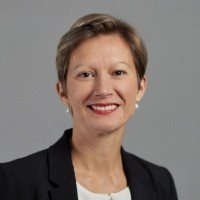- Video Library
- Anne Osdoit, Moon Surgical - Laparoscopic Surgical Robot | LSI Europe '22
Anne Osdoit, Moon Surgical - Laparoscopic Surgical Robot | LSI Europe '22

Anne Osdoit
Anne has been running our in-house MedTech accelerator, MD Start, since she came on board as a partner in 2015.
She embodies the MD Start team’s hands-on approach: Anne is the founding and current CEO of both Gradient Denervation Technologies and Moon Surgical. She is a Board member of both SafeHeal and AblaCare — two companies where she was also founding CEO.
“What I like about this job is that it is about building products and companies,” Osdoit says. “It is very diverse. It is in different therapeutic areas, in different spaces with different technologies.”
Prior to joining Sofinnova, Anne held several key positions at Mauna Kea Technologies, a Paris-based medical technology company with global presence, developing a disruptive “optical biopsy” technology. She was closely involved in multiple financing rounds, including the company’s initial public offering on the Paris Euronext, a highly successful operation and the largest public listing for the sector that year.
Anne is an active angel investor and an independent board member of FeetMe and Cardiologs Technologies, two Paris-based e-health startups. Cardiologs was purchased by Philips in 2021.
Anne is a trained biomedical engineer from Ecole Polytechnique of Paris, France and Johns Hopkins University in Baltimore, Maryland. She holds additional degrees in Biostatistics and epidemiology applied to clinical trials (Université Pierre et Marie Curie), as well as Corporate Finance (London School of Economics).
Anne Osdoit
Anne has been running our in-house MedTech accelerator, MD Start, since she came on board as a partner in 2015.
She embodies the MD Start team’s hands-on approach: Anne is the founding and current CEO of both Gradient Denervation Technologies and Moon Surgical. She is a Board member of both SafeHeal and AblaCare — two companies where she was also founding CEO.
“What I like about this job is that it is about building products and companies,” Osdoit says. “It is very diverse. It is in different therapeutic areas, in different spaces with different technologies.”
Prior to joining Sofinnova, Anne held several key positions at Mauna Kea Technologies, a Paris-based medical technology company with global presence, developing a disruptive “optical biopsy” technology. She was closely involved in multiple financing rounds, including the company’s initial public offering on the Paris Euronext, a highly successful operation and the largest public listing for the sector that year.
Anne is an active angel investor and an independent board member of FeetMe and Cardiologs Technologies, two Paris-based e-health startups. Cardiologs was purchased by Philips in 2021.
Anne is a trained biomedical engineer from Ecole Polytechnique of Paris, France and Johns Hopkins University in Baltimore, Maryland. She holds additional degrees in Biostatistics and epidemiology applied to clinical trials (Université Pierre et Marie Curie), as well as Corporate Finance (London School of Economics).

17011 Beach Blvd, Suite 500 Huntington Beach, CA 92647
714-847-3540© 2025 Life Science Intelligence, Inc., All Rights Reserved. | Privacy Policy







